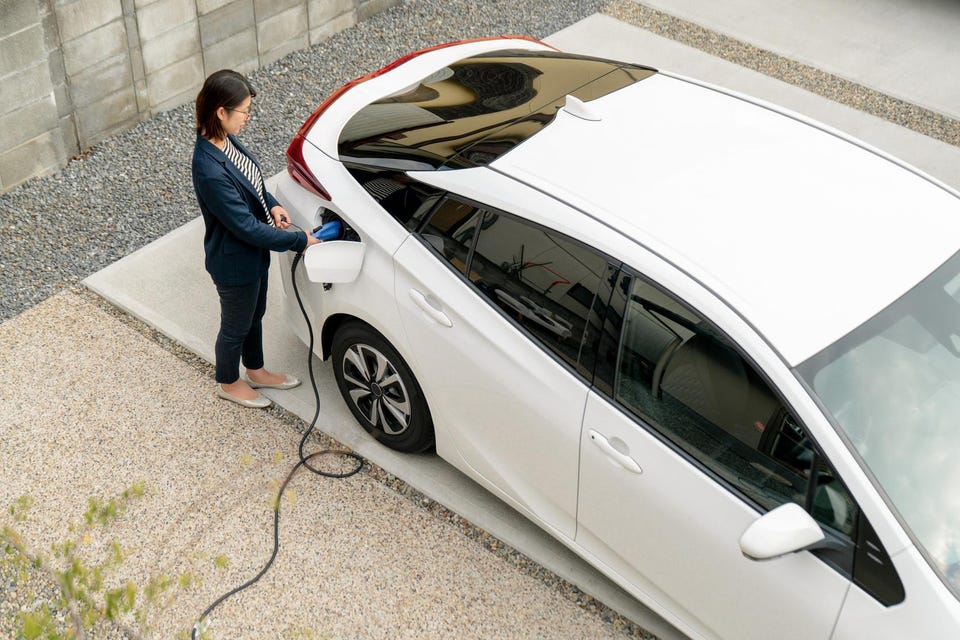How Utility Marketers Can Help Keep Your Car Running And The Lights On

Gautam Aggarwal, CMO of Bidgely, evolving energy analytics for utilities with the power of data and artificial intelligence.

For the first 70 years of its existence, the electric utility industry went through a period of rapid expansion and growth, culminating with the rollout of air conditioning in the late 1960s and ’70s and its associated dramatic increase in cooling-related load.
Now as transportation and household electrification scale rapidly, the industry has entered a new and very different period of accelerated growth.
The legacy one-way commodity supply relationship is being replaced by a partnership model in which consumers and utilities have to work together as equal stakeholders in ensuring grid resiliency and moving the clean energy transition forward. And at the center of this new era sit utility marketers, responsible for fostering this new relationship with customers.
Utilities As The New ‘Gas’ Station
Electric vehicles (EVs) provide a clear example of this seismic shift. EVs (and their subsequent charging needs) present an exciting opportunity for utilities to generate significant new revenue.
But as utilities become the new “gas” stations, they’re taking on an even more important role in customers’ lives. The pressure to reliably deliver convenient, worry-free transportation is equal or greater to that to deliver electricity. And they must do both, even while one threatens the other.
With every EV that rolls off the lot, peak energy consumption continues to swell, challenging power grid reliability like never before. EV adoption also tends to grow in pockets, leading to enormous loads on individual transformers and substations.
To prevent rolling blackouts and other grid strain, utilities have long engaged in “demand response” programs to manage peak events, such as heatwaves. Through mass marketing, consumers are asked to shift or conserve energy until the peak event has passed.
However, in the case of transportation electrification, peak loads will be a regular occurrence, requiring a new approach to demand response and how to market these programs.
If our goal is to cultivate EV drivers as partners and motivate mutually beneficial behaviors, utility marketers need to effectively provide personalized coaching about ways to save as well as feedback on the positive (or negative) impact each consumer’s actions are having on the grid. But what’s the ideal way to go about this when mass marketing has long been the approach of choice for these programs?
Step 1: Understanding The Impact Of Charging Choices
Most EV drivers rarely consider how their individual charging patterns play into their utility’s supply-and-demand operations, let alone understand how their charging behaviors could negatively or positively affect overall grid capacity and stability.
Thankfully, unlike the air conditioning rollout of the last century, utilities today have the benefit of smart meter analytics. Today’s sophisticated data science can help reveal which homes have EVs, what equipment each home is using to charge its vehicle(s) and during what hours they charge. From that behind-the-meter foundation, utilities can conduct a bottom-up analysis of grid infrastructure at every level.
Unlike first-generation electric vehicle load-shifting efforts that sought to move charging en masse from, say, 5 p.m. to midnight, household meter intelligence enables utilities to more agilely manage load at the precise time and location where constraints exist to help prevent outages and scale capacity.
But the key for utility marketers is engaging each driver to make load management at the micro-level possible. It requires much more than mass marketing about EV charging best practices. Narrowing EV program marketing down to just EV drivers is good. Narrowing it down to those who actually charge during peak times is even better. The win-win here for utility marketers is that personalized engagement is highly targeted—and more cost-effective—with better results thanks to relevance.
Step 2: Allowing Utilities To Share The Driver’s Seat
If you live outside the states of New Jersey and Oregon, it might be hard to remember the days when full-service gas stations were the norm. But if utilities are going to successfully balance EV grid loads with reliability, they ultimately need drivers to relinquish total “fueling” autonomy and empower them to share the driver’s seat and provide “full-service” charging.
Typically, the first approach utility marketers take to optimize charging behaviors is to market a “passive” managed charging program in which utilities rely upon proven behavioral modification strategies to influence charging behavior. This requires timely marketing communications about relevant rebates and other monetary incentives targeted at known EV households. The downside is that it is only as effective as EV drivers are consistent and committed to behavioral change.
As EV load escalates rapidly, “active” managed charging is emerging as an essential grid management phase next, in which drivers agree to give their utility control over when and how long their vehicle charges. In essence, it’s a new era of full-service “fueling.”
With active managed charging, utilities realize a much greater load shift because they take charging decisions out of the hands of the driver and ensure cars charge at the optimal time, every time.
However, it is difficult for utility marketers to convince drivers to give utilities access to their vehicles and give up charging decision autonomy. Here too, smart meter data empowers utility marketers to understand EV drivers at a personal level—and turn that intelligence into engagement and relationship management that convinces EV drivers that they can trust their utility to keep their car powered up and ready to drive when needed.
A Revolution We Can Manage
Data is proving to be the essential foundation to enable utility marketers to identify and target EV drivers, optimize EV program outreach, shift charging load and manage charging behaviors—turning the EV revolution and the challenge of demand into an opportunity they can realize, today and long into the future.
Forbes Communications Council is an invitation-only community for executives in successful public relations, media strategy, creative and advertising agencies. Do I qualify?
